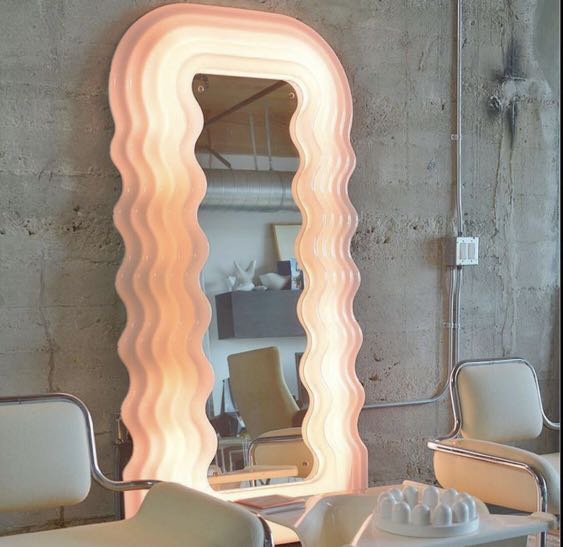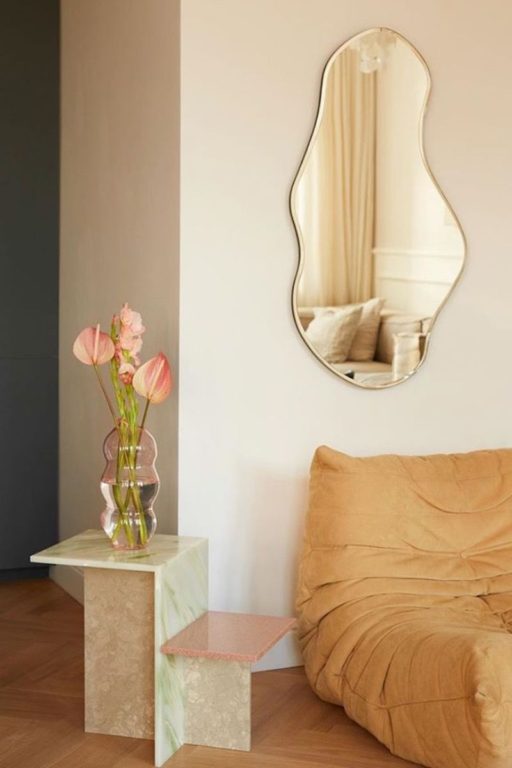l’art pour l’art. Art for art’s sake.
Homes have the potential to be a sanctuary of expression; a refuge to fill with character and unique personal items. Household art was a part of a distinct movement called aestheticism in the middle class decoration of the late nineteenth century. It aimed, as the name implied, to incorporate art into the home to display self-expression and beauty. It was primarily disseminated through books and articles written by tastemakers who educated the newly industrialized carpenters and homeowners on how to incorporate art pieces in a home setting. Breaking away from Victorian conservatism, writers sought to establish an aesthetic artistic standard for the home that would be in harmony with the recently industrialized society. But let’s be real: cavemen were making stop motion art on the walls of caves brought to life by fire, so the true origin of art in homes is subjective. Interior design aficionados who like to keep their living space updated will hopefully benefit from this list of the latest decor trends. Especially if they feel as if they live under a rock and their only idea is to plaster on wallpaper-wait maybe that’s why society has surpassed the status of cavemen. Tastefully selecting furniture through the course of consumerism is a luxury of the modern day- but hey, the stop motion art was way ahead of its time.
Disco Balls
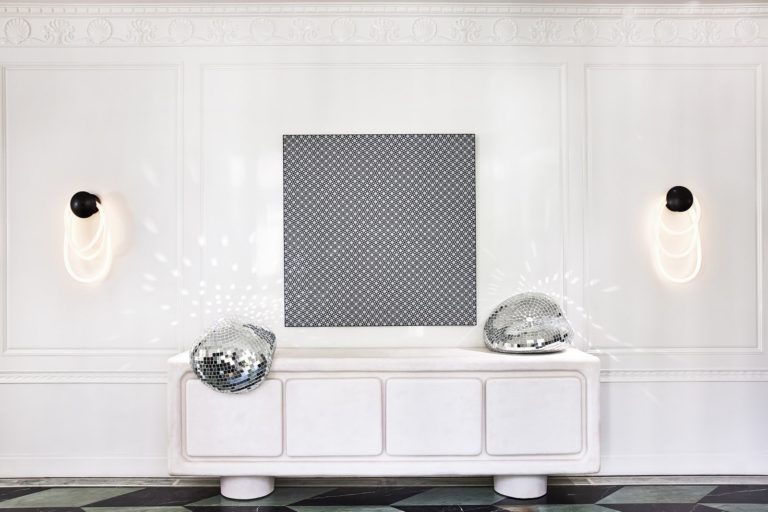
Countless molten, amorphous myriad reflectors are transitioning from nightclubs onto people’s table surfaces. There have been variations of reflective balls throughout world history If you look at the 1800s, Victorian era again where home decor was becoming significant – reflective balls were as well, but not in houses. In 1897, a documented issue of Electrical Worker, an electrician union publication describes a union party that hung a carbon arc lamp flashed on a “mirror ball.” An inventor named Louis B. Woeste filed a patent for “myriad reflector.” object in 1924, making them emerge in burlesque Berlin nightclubs and ballrooms. Then in the 1970s, the disco era appeared, so disco balls have become a universal icon. Nostalgia is trendy these days- but it could also be that when nightclubs closed down in 2020 everyone wanted the party feeling to translate in their living space. The organic melted forms perhaps represent the downfall of gathering in large crowds. Or, people just like the way they look, they are appealing to the eye and the reflective shadows they cast on the walls are dreamy. Kelley Wearstler brought them to popularity this October by discovering Rotganzen, the Dutch collective best known for its “Quelle Fête ” series of sculptural disco balls on Instagram. She ordered her own Persistence Of Memory-Esque mosaic ball and she says, “It’s been proudly sitting in my entry vestibule, getting so much attention, ever since,”. Wearstler started spotlighting the avant-garde collective on her e-commerce site, and she is known for her interior decorating skills. If you can’t get your hands on a Rotganzen, you can certainly make one yourself. Gather supplies of a foam ball, mirrored tiles, glue, felt, and a sharp object to cut the ball into shape. Crafts make your piece ultra-unique and can save you money.
Floral Couches
Once again, arts and crafts, decorative, folksy eras of the nineteenth century come into the conversation. Although industrialization was on the rise-there were still country folks who had created decorations suitable for flora and nature themes. The world is bringing back nature themes again with pandemic, which played a role as people tried to bring the outdoors indoors when they were quarantined. Gray and dull is what some people run away from when it increases around them. The 1970s-1980s were decades of questioning societal norms and the outdated manners of doing things. Then, design movements like mid-century modern and minimalism came to fruition. “Chintzy” couches of centuries past were carried away. Although we did hold onto the disco balls, just like our Victorian-era and 1980s ancestors, we longed for the colorful world of nature while we were stuck indefinitely indoors. What was once known as stuffy grandma couches blew up in sales. In fact, decor site 1stDibs has seen a 60 percent increase in searches for floral print couches.
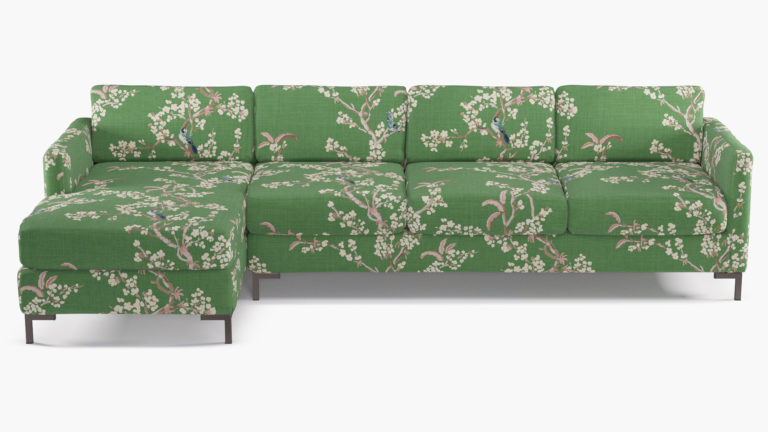
Ceramics
Biolifics (nature-like) design succeed into ceramics. They’re another way to bring earthy tones, plants, and organic shapes indoors. Ceramics are still a popular addition to home decoration because they are versatile and customizable. New iterations of the medium are in forms ranging from chairs to table lamps. Pops of unnatural color and texture are in trend as well for ceramics.
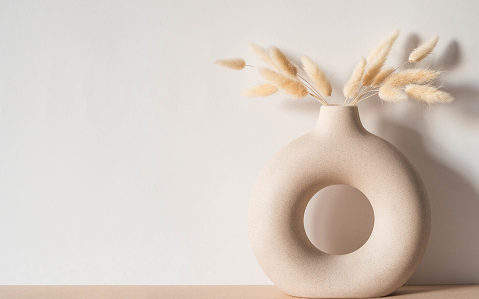
Squiggly Mirrors
It’s no surprise that wavy furniture is on this list after seeing that melted disco balls, floral print couches, and biolific ceramics are. Quirky design is very in trend this year. Etsy reported a 28,236% increase in searches for wavy candles and a 5,296% increase in searches for wavy mirrors over the past three months, compared to the same time period in 2020. Groovy blob lines and doodle-like adornments may feel new and lively in today’s homes, but the decor started decades ago with the Memphis design movement. Founded in 1980, the Memphis Group was a radical collective of designers and architects from Milan, Italy whose colorful, outgoing style was an attention grabber to the public. The Memphis group drew inspiration from the forms and vibrant colors of Art Deco and Pop art with design’s that eschewed the mid century modern and minimalist ideas. They’re among the work that precisely marked the “kitchy” (similar to chintzy), recalcitrant opinions that formed throughout history. For example, a member of the Memphis group named Ettore Sottsass created the “UltraFragola Mirror,” a wave-edged acrylic mirror that lit up. Essentially, the waved mirrors you see nowadays take inspiration from Sottsass. You can DIY your own wavy mirror by cutting out a piece of wood or styrofoam and placing a rectangular mirror behind it.
